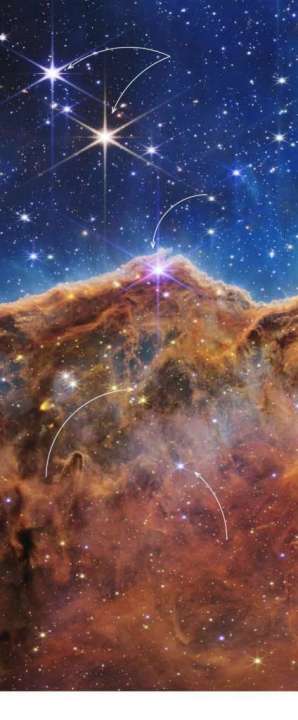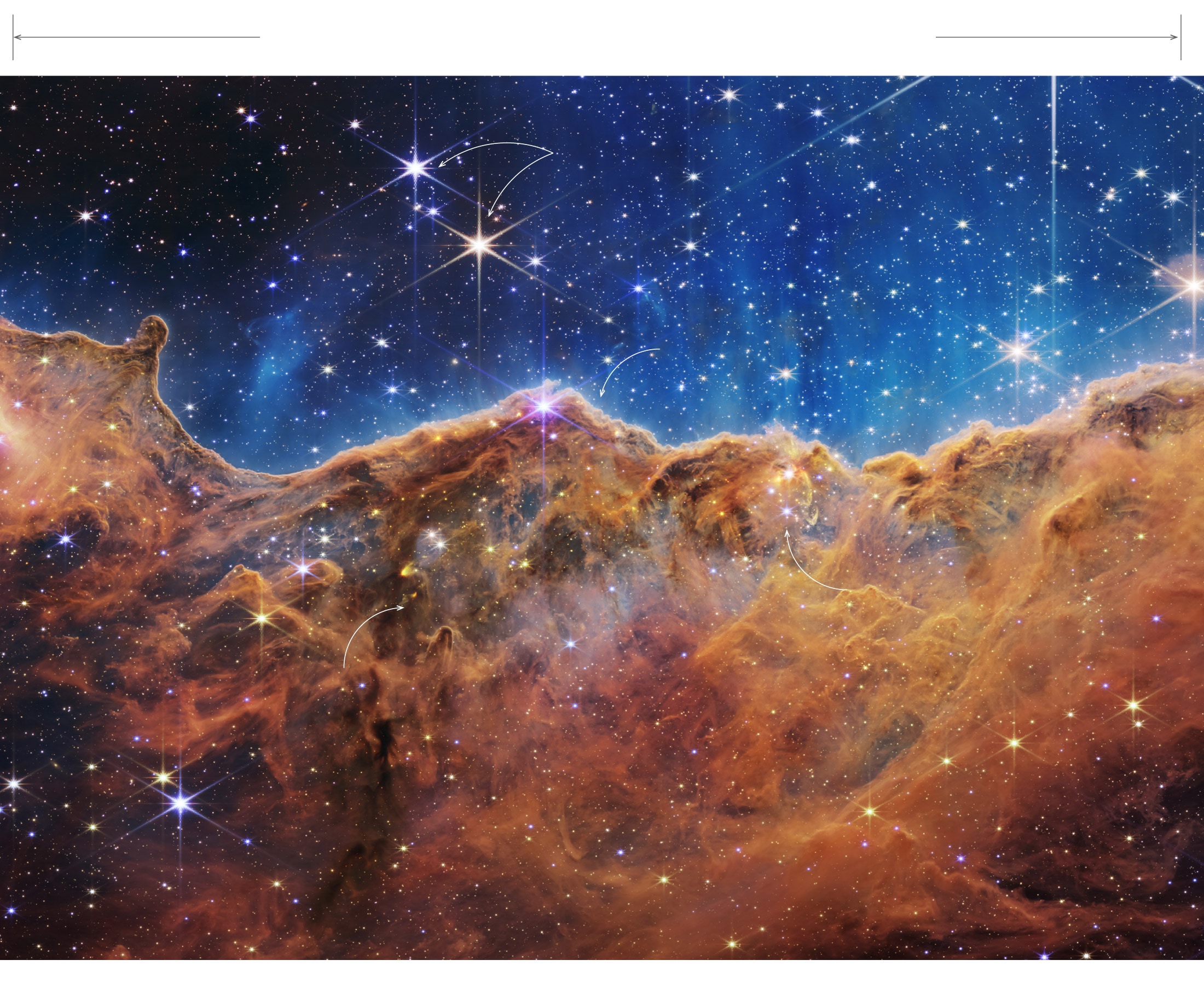This is a nebula — a giant cloud of gas and place where stars are born. It’s called Carina Nebula.
Stop for a minute. These space images are worth your time.

These are stars.
Astronomers don’t know the full story of how these features formed.
These are stars that just formed in our galaxy from the dust in the nebula.
NASA, ESA, CSA and STScI

These are stars.
Astronomers don’t know the full story of how these features formed.
These are stars that just formed in our galaxy from the dust in the nebula.
NASA, ESA, CSA and STScI

It would take about 8 years traveling
at the speed of light to cross this area.
Carina Nebula
These are stars.
These are stars that just formed in our galaxy from the dust in the nebula.
Astronomers don’t know the full story of how these features formed.
NASA, ESA, CSA and STScI

It would take about 12 years traveling at the speed of light to cross this area.
Carina Nebula
These are stars.
These are stars that just formed in our galaxy from the dust in the nebula.
Astronomers don’t know the full story of how these features formed.
NASA, ESA, CSA and STScI
Carina is one of the largest star-forming regions in the Milky Way. It is about 7,600 light-years away.
This means that it would take 7,600 years traveling at the speed of light to go from Earth to Carina’s region. So this is not Carina Nebula as it looks today but as it did 7,600 years ago, when the light recorded by the new James Webb telescope left its source.
Everything about the Webb telescope is mind-boggling. Ponder this: Humans sent a telescope the size of a tennis court into space and parked it four times farther away than the moon.
There it orbits the sun along with us, just so we can get some pictures.
The very first Webb image made public showed thousands of galaxies as they appeared about 13 billion years ago — that’s almost as far back in time as the Big Bang itself:
Remember, most of the colored circles and smudges in this image are galaxies — not stars. Galaxies can contain billions of stars and planets. And the square above represents just a tiny speck of space — NASA compared it to the patch of sky that would be covered by a grain of sand held at arm’s length on the surface of the Earth.
The Big Bang itself is not something we’ll be able to see with the Webb telescope. But the images the telescope produces will help us learn when and how the first celestial objects were formed as the universe cooled.
To give you an idea of what the Webb can do, this is what we could see in the same region of sky before and after the Webb telescope.
The Webb will help us better understand much more than how galaxies form. The photo below shows how a star similar to our sun looks as it is dying:
As the star loses strength, it sheds its outer layers, creating a cloud of gas — the colorful ring surrounding the core. Such images will help us understand how dying stars spread atoms and molecules into space, and how that changes the chemistry of the universe.
With the Webb, we’ll also be able to see how stars are born. This image shows a group of five galaxies. Some of the galaxies are so close that they crash into each other, forming new stars. Younger stars are blue, older ones are red.
Finally, the Webb telescope allows scientists to collect data of the chemical composition of stars and planets outside our solar system. This kind of detailed information will ultimately help us look for signs of life elsewhere in our galaxy.
These stunning images are a major achievement for us Earthlings. And given everything absurd we’ve witnessed on Earth of late, they are more than that. If nothing else, the humongousness of the universe ought to put our problems into perspective. A little insignificance isn’t such a bad thing.
Sources: Yvette Cendes, an astronomer at the Harvard-Smithsonian Center for Astrophysics, helped to label the images on this page. Mercedes López-Morales, also from the Harvard-Smithsonian Center for Astrophysics, and Nikolay Nikolov, from the Space Telescope Science Institute, were also consulted for this piece.






